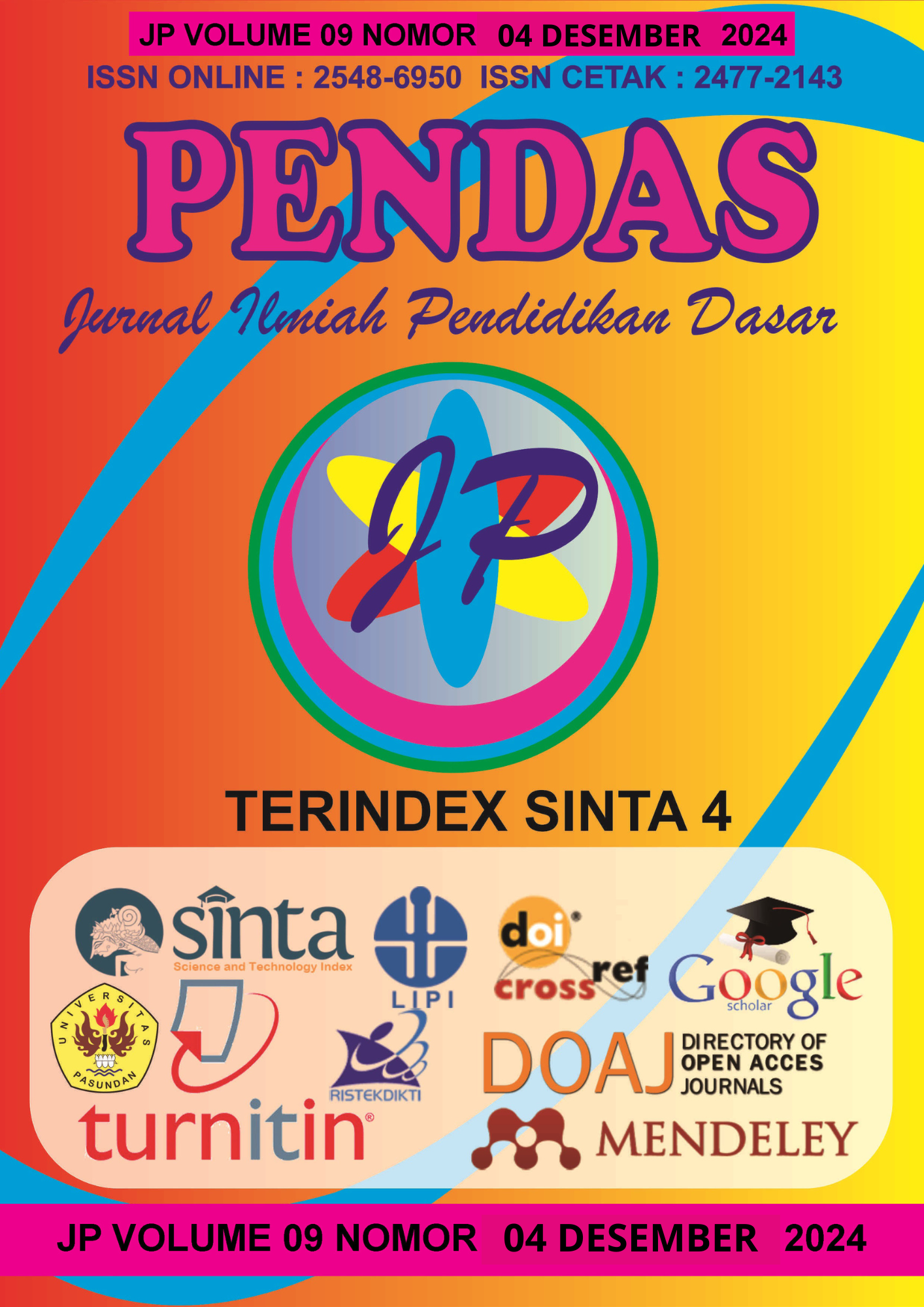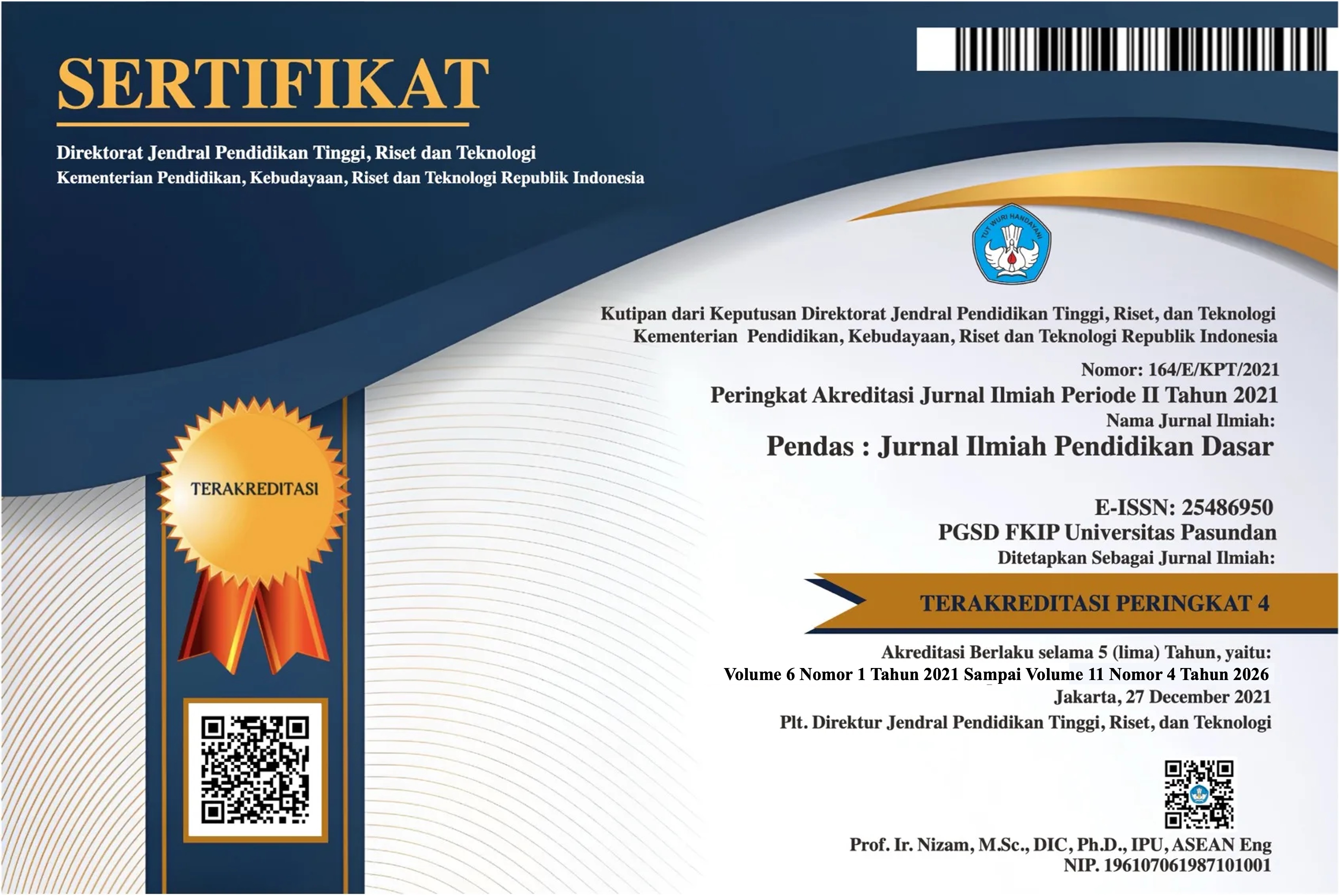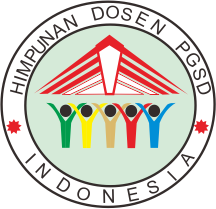THE IMPLEMENTATION DIFFERENTIATED LEARNING IN TEACHING NARRATIVE TEXTS TO ENHANCE STUDENTS’ CRITICAL THINKING
DOI:
https://doi.org/10.23969/jp.v9i04.19701Keywords:
differentiated learning, critical thinking skills, narrative text, learning motivation, learning effectivenessAbstract
In today’s educational landscape, the development of critical thinking skills is essential for equipping students to navigate complex information and real-world challenges. Conventional teaching methods, however, often fall short in fostering these skills, particularly in the context of analyzing narrative texts. Differentiated learning, a teaching strategy that tailors instruction to meet diverse student needs, has shown promise in creating a more engaging and personalized learning environment. This research aims to analyze the effectiveness of differentiated learning in enhancing students' critical thinking skills in learning narrative texts. Differentiated learning was applied to the experimental group, while the control group received conventional instruction. This study utilizes a mixed-methods approach, integrating both quantitative and qualitative data. Quantitative data was collected through pre- and post-tests in both groups and analyzed using statistical methods to measure improvements in critical thinking. The results showed a significant increase in the experimental group's scores, with a pre-test average of 55.0 and a post-test average of 83.6, marking an improvement of 28.6 points, compared to the control group’s increase from 48.3 to 64.6, or 16.3 points. Statistical analysis confirmed that this difference was significant, supporting the hypothesis that differentiated learning more effectively enhances critical thinking than conventional methods. Qualitative data, obtained through observation, interviews, and documentation, provided deeper insights into students’ experiences and perceptions of differentiated learning. Students in the experimental group felt more confident, actively engaged in discussions, and were better able to analyze narrative structures and themes. They also reported that while social media aided learning, it occasionally distracted from focus. Overall, differentiated learning proved effective in improving students' critical thinking, motivation, and reflective abilities. These findings suggest that differentiated methods can enhance the quality of learning in schools, particularly in understanding and analyzing narrative texts. This study underscores the need for innovative teaching strategies to foster critical thinking in education.
Downloads
References
Black, P., & Wiliam, D. (1998). Assessment and Classroom Learning. Assessment in Education: Principles, Policy & Practice, 5(1), 7-74.
Borg, W. R., & Gall, M. D. (1989). Educational Research: An Introduction. New York: Longman.
Brookfield, S. D. (2017). Becoming a Critically Reflective Teacher (2nd ed.). Jossey-Bass.
Brookfield, S. D. (2017). The Skillful Teacher: On Technique, Trust, and Responsiveness in the Classroom. Jossey-Bass.
Brookhart, S. M. (2010). How to Assess Higher-Order Thinking Skills in Your Classroom. Alexandria, VA: ASCD.
Creswell, J. W. (2014). Research Design: Qualitative, Quantitative, and Mixed Methods Approaches. Thousand Oaks, CA: SAGE Publications.
Ennis, R. H. (2011). The Nature of Critical Thinking: An Outline of Critical Thinking Dispositions and Abilities. University of Illinois.
Facione, P. A. (1990). Critical Thinking: A Statement of Expert Consensus for Purposes of Educational Assessment and Instruction. The California Academic Press.
Facione, P. A. (2015). Critical Thinking: What It Is and Why It Counts. Measured Reasons LLC.
Frey, N., Fisher, D., & Hattie, J. (2017). Visible learning for literacy, grades K-12: Implementing the practices that work best to accelerate student learning. Corwin Press.
Frey, N., Fisher, D., & Hattie, J. (2017). Visible learning for literacy: Implementing the practices that work best to accelerate student learning. Thousand Oaks, CA: Corwin.
Gregory, G. H., & Chapman, C. (2022). Differentiated Instructional Strategies: One Size Doesn’t Fit All (4th ed.). Corwin Press.
Hattie, J., & Zierer, K. (2018). 10 Mindframes for visible learning: Teaching for success. Routledge.
Heacox, D. (2012). Differentiating Instruction in the Regular Classroom: How to Reach and Teach All Learners. Minneapolis: Free Spirit Publishing.
Kirschner, P. A., & Hendrick, C. (2020). How Learning Happens: Seminal Works in Educational Psychology and What They Mean in Practice. Routledge.
Lai, E. R. (2011). Critical Thinking: A Literature Review. Pearson's Research Reports.
Langer, J. A. (2010). Envisioning Knowledge: Building Literacy in the Academic Disciplines. Teachers College Press.
Langer, J. A. (2010). Envisioning Literature: Literary Understanding and Literature Instruction (2nd ed.). Teachers College Press.
Marzano, R. J. (2020). The New Art and Science of Teaching Reading: (Your Handbook for Literacy Instruction and the 13 Critical Skills Every Student Needs). Solution Tree Press.
McTighe, J., & Willis, J. (2019). Upgrade Your Teaching: Understanding by Design Meets Neuroscience. ASCD.
Paul, R., & Elder, L. (2019). Critical Thinking: Tools for Taking Charge of Your Learning and Your Life (3rd ed.). Pearson.
Ritchhart, R., & Church, M. (2021). The Power of Making Thinking Visible: Practices to Engage and Empower All Learners. Jossey-Bass.
Rosenblatt, L. M. (2005). Making meaning with texts: Selected essays. Heinemann Educational Books.
Santrock, J. W. (2017). Educational Psychology (6th ed.). McGraw-Hill Education.
Santrock, J. W. (2017). Educational psychology (6th ed.). New York: McGraw-Hill.
Sousa, D. A., & Tomlinson, C. A. (2018). Differentiation and the brain: How neuroscience supports the learner-friendly classroom (2nd ed.). Bloomington, IN: Solution Tree Press.
Subban, P. (2006). Differentiated Instruction: A Research Basis. International Education Journal, 7(7), 935-947.
Tomlinson, C. A. (2001). How to Differentiate Instruction in Mixed-Ability Classrooms. Alexandria, VA: ASCD.
Tomlinson, C. A. (2014). The Differentiated Classroom: Responding to the Needs of All Learners (2nd ed.). ASCD.
Tomlinson, C. A. (2014). The differentiated classroom: Responding to the needs of all learners (2nd ed.). Alexandria, VA: ASCD.
Tomlinson, C. A. (2020). How to Differentiate Instruction in Academically Diverse Classrooms (3rd ed.). ASCD.
Tomlinson, C. A., & Imbeau, M. B. (2010). Leading and Managing a Differentiated Classroom. Alexandria, VA: ASCD.
VanTassel-Baska, J., & Brown, E. F. (2021). Designing and Utilizing Differentiated Assessments in the Classroom. Routledge.
Yin, R. K. (2018). Case Study Research and Applications: Design and Methods. Los Angeles: SAGE Publications.
Downloads
Published
Issue
Section
License
Copyright (c) 2024 Pendas : Jurnal Ilmiah Pendidikan Dasar

This work is licensed under a Creative Commons Attribution 4.0 International License.



















